Although many women try to conceal their thinning and sparse hair with wigs or hair dye, these methods provide only a temporary solution. For women experiencing hair loss, hair transplantation should be considered as a permanent solution.
Hair plays a crucial role in complementing a woman’s feminine style and appearance. Thinning and sparse hair can affect a woman’s quality of life and social interactions. According to statistics made, one in 4 women experiences some degree of hair loss. It has also been observed that women facing this issue are more likely to suffer from psychological problems such as loss of self-confidence and depression.
With the rapid advancement of FUE and DHI techniques, the demand for female hair transplantation has significantly increased. Thanks to these, many women can now grow their hair longer and regain their previous quality of life. This is because the only permanent way to restore lost hair in women is through hair transplantation.
Under the leadership of Dr. Hakan Doğanay, it is possible to achieve natural, combable hair at AHD Clinic.
Can Women Undergo Hair Transplantation?
Hair transplantation is not exclusive to men. If a woman meets the necessary conditions, she can certainly benefit from this procedure. However, before undergoing hair transplantation, a womanwho is a candidate must first be evaluated through medical examinations and laboratory tests to determine her suitability for the operation. Unfortunately, women are not as fortunate as men when it comes to hair transplantation because the causes of hair loss in women differ from those in men. Since we will discuss the causes of hair loss in another section, we will not go into detail here.
Women in the following three categories have a high chance of achieving successful results from hair transplantation:
- Women with a high forehead: In these cases, there is no actual hair thinning, sparseness, or loss. The hairline is naturally set further back from birth, and the donor area hair is quite strong.
- Hair loss due to trauma: Women who have lost hair in a small area due to accidents, burns, or surgical scars. Women in these two categories are ideal candidates for hair transplantation.
- Androgenic alopecia: This refers to male-pattern genetic hair loss, which is associated with the hormone DHT. The total testosterone level in the blood is an important factor in diagnosing androgenic hair loss. The Ludwig hair loss classification system is used to assess hair loss in this group.If you would like to determine whether you are a suitable candidate for hair transplantation, you can contact us for an evaluation. Now, let’s take a brief look at this classification system;
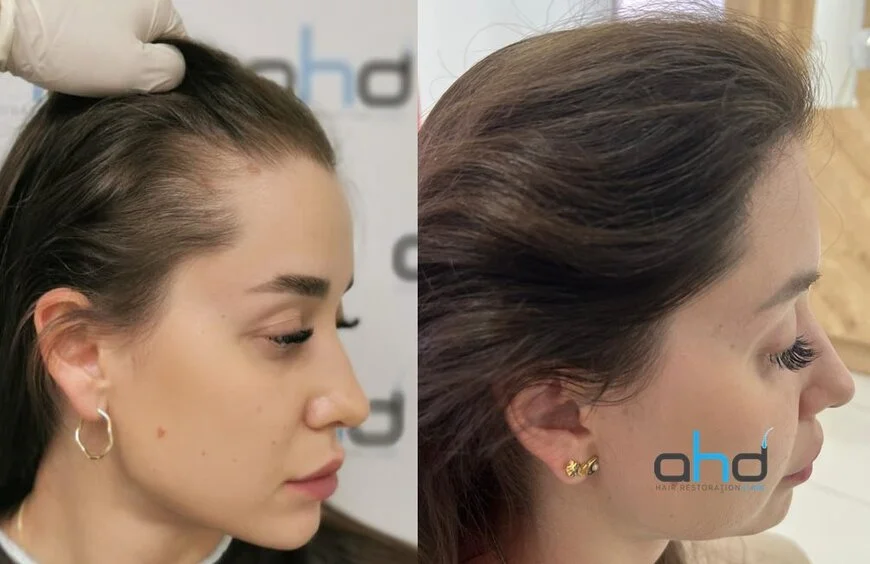
Stage 1: There is slight thinning along the hair part and toward the crown. Since the front hairline remains intact, women in the first stage usually do not have significant complaints.
Stage 2: Minimal thinning and weakening of hair appear at the front hairline. Thinning along the hair part continues to increase, making the scalp more visible. Overall, hair volume reduction becomes noticeable.
Stage 3: The scalp becomes completely visible. Hair loss is widespread and extensive. There is significant thinning and weakening in the hair on the back and sides of the head.
For women diagnosed with androgenic alopecia, the most crucial factor for hair transplantation success is the condition of the donor area hair. If a woman has thin and sparse donor area hair, she is unlikely to achieve a successful result from hair transplantation. Women with higher total testosterone levels tend to have a better chance of success. However, since women usually retain their frontal hairline in the early stages, they typically come for hair transplantation at more advanced stages. For women in Stage 3, success rates are relatively lower because the donor area is also weak. Minoxidil can be recommended as a medical treatment for androgenic alopecia patients.
For women experiencing hair loss due to thyroid disorders or iron deficiency anemia, treating these underlying conditions is essential before hair transplantation. Otherwise, the success rate of the procedure will remain low, and there is a risk of further hair loss.
How Is Hair Transplantation Performed for Women?
Hair transplantation for a woman can be planned in two ways:
- Densification of Thinned Hair: This refers to hair transplantation performed on women in the androgenetic alopecia group. Women mostly undergo hair transplantation to densify their thinning hair.
- Transplantation on a Completely Bald Area: This category includes procedures such as advancing the frontal hairline or transplantation on a scar.
First, the number of grafts to be taken from the donor area is determined based on the size of the area to be transplanted. It should be remembered that, due to a woman’s nature, completely shaving the head like a man is an unreasonable idea. Therefore, the unshaven hair transplantation method is essential for women. Only a small area at the back of the head is shaved to extract grafts from the donor region. However, the area to be transplanted is not shaved.
Hair transplantation for women is performed in three stages. These stages are as follows:
1) Extraction of Grafts from the Donor Area:

Following local anesthesia, the planned number of grafts is extracted one by one from the donor area using the FUE technique. There are still clinics that perform graft extraction using the FUT method. However, as AHD Clinic, we have not been using the FUT technique since 2010. If the patient is extremely anxious, a sedative medication may be administered before anesthesia. This stage can take approximately 1 to 1.5 hours.
2) Hairline Design:
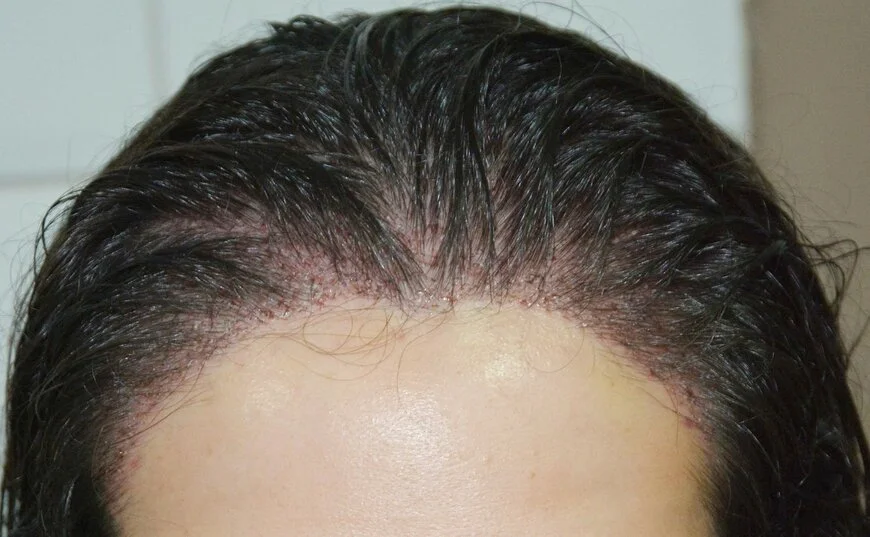
If a transplantation is planned for the forehead and temple area of a woman who wants to lower her hairline, this stage is of great importance. Here, the doctor’s artistic design ability must come into play. This is because women’s hairlines are softer and
more transparent compared to men’s. For each woman, a unique, natural hairline must be designed in harmony with her facial structure.
3) Transplantation of Extracted Grafts:
The extracted hair grafts are transplanted one by one into the planned area using either the FUE or DHI method. In our opinion, the DHI, also known as the Choi pen technique, is the ideal method for women’s hair transplantation. Because, since the hair is not shaved, the densification process yields the best results when performed with the implanter pen technique. This stage is quite comfortable. During the procedure, you can read a book, listen to music, or watch a movie.
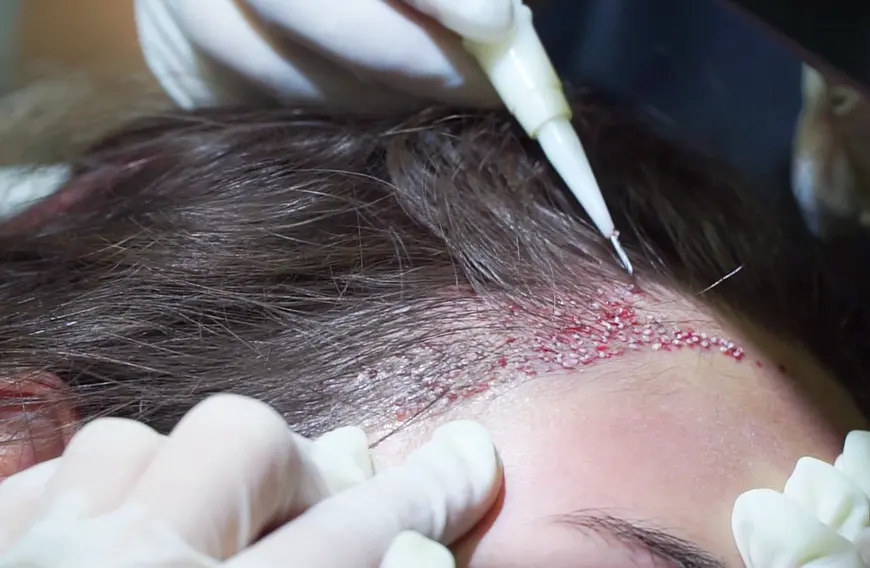
With the unshaven method, it is not always possible to extract a sufficient number of grafts from the donor area in a single session. Therefore, multiple hair transplant sessions may be required to achieve ideal density. The fundamental rule for ensuring a natural-looking hairline in women is placing the hair follicles at the correct angles. The DHI technique is highly advantageous in this regard. Additionally, since there is less bleeding, the healing process is faster.
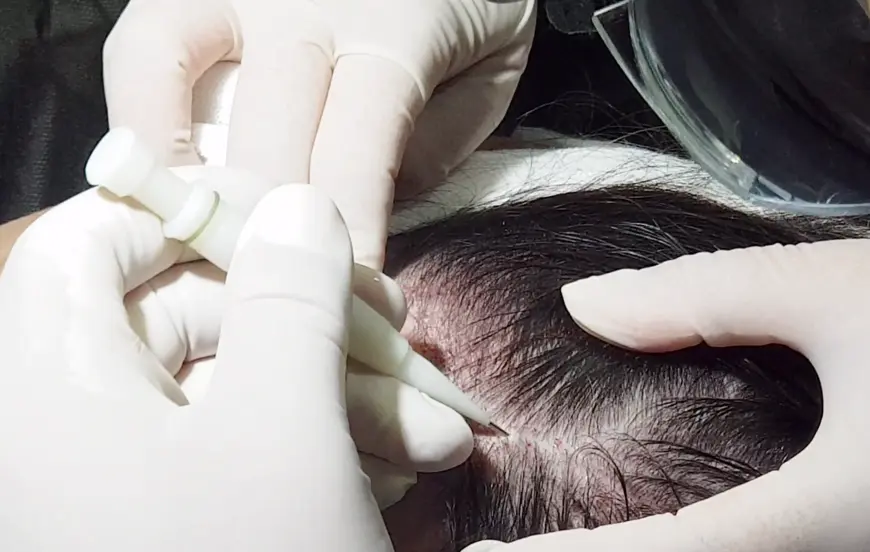
The average duration of a hair transplant procedure for women varies between 3 to 7 hours depending on the number of grafts.
Is Hair Transplantation Painful for Women?
Before the extraction and transplantation of grafts, local anesthesia is performed. During anesthesia, there is a few minutes of mild pain, but it is not something to be overly concerned about. After anesthesia, the treated area becomes numb which allows the procedure to be completed comfortably. Following the transplantation, there is no significant pain.
Post-Hair Transplant Process in Women
In fact, there is no significant difference between the hair transplant process for men and women. However, since unshaven transplantation is performed, the healing process for women is easier to go through. The existing hair naturally covers the transplanted area, making it easy to conceal the scabbed appearance. If we look at other details of the post-transplant process:
After the transplant, you can comfortably return to your home or hotel. If you experience pain, simple painkillers will be sufficient to resolve the issue. From the first day, small blood clots in the transplanted area dry up and form scabs. With the first wash, these scabs will gradually disappear. A few days later, there may be slight swelling in the forehead and around the eyes. This swelling is normal and will subside on its own in a short time. To reduce swelling quickly, we recommend keeping your head elevated by sleeping with two pillows and consuming plenty of fluids.
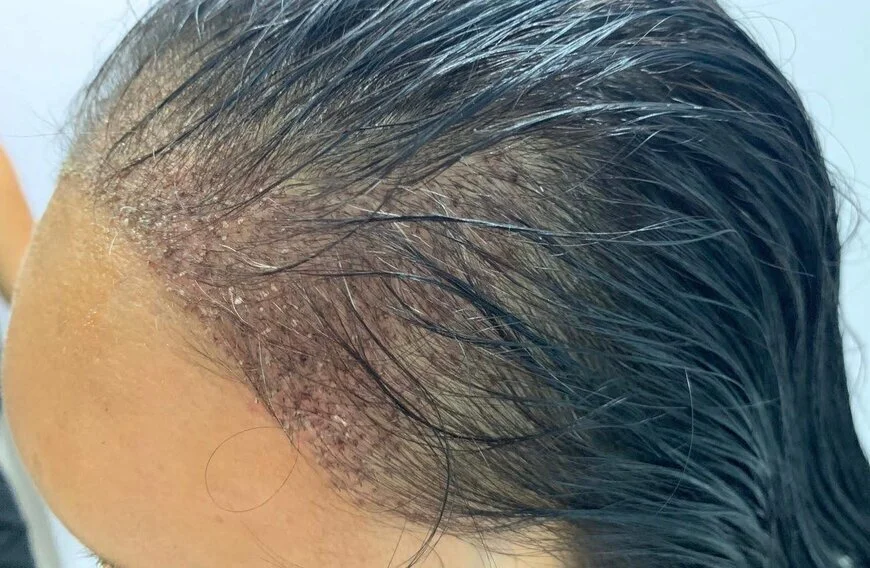
There may be temporary numbness in the donor and transplanted areas for a few days. There is no need to worry, as this is a completely temporary side effect.
The washing process after a hair transplant in women should be more delicate and gentle. Before washing, a cream is applied to soften the scabs. However, since this cream may stick to the unshaven long hair, the washing process must be performed carefully. If the transplantation was done using the implanter pen technique, washing can begin on Day 2. It is best to have the first wash done at the clinic where you had your transplant. By Day 10, the scabs should be completely shed.
By the end of the first week, the healing process is mostly completed, and you can return to work.
Just like in men, shock shedding occurs in women’s hair transplants as well, beginning from the second week and it may last up to 2 months.
The transplanted hair must be protected from sunlight for the first 2 months. You can use a sunscreen with a protective factor for this. After 1 month, you can dye your hair.
Before and After Results of Hair Transplantation in Women
Hair that is lost due to shock shedding starts to grow back from the 4th month. The initial growth consists of thin and weak hairs. By the end of the 4th month, approximately 30% of the transplanted hair is usually emerged. Over time, both the density and thickness of the hair increase. At the 6th month, the results become noticeable, and about 60% of the hair is expected to have grown. From the 7th month onward, the transplanted hair strands thicken significantly. Starting from the 8th month, hair growth accelerates, and exciting results begin to appear.
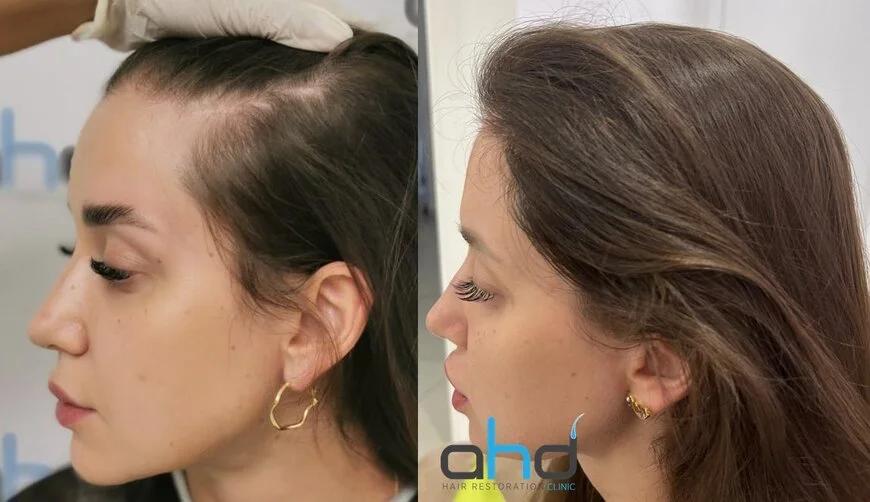
For a completely natural result, the final outcome is fully visible at 12 months. If you would like to benefit from the experiences and reviews of other women who have undergone hair transplantation, forum websites can be an excellent resource for you. When you contact AHD Clinic, we can provide more detailed information, including before-and-after results of female patients.
How Much Does Hair Transplantation Cost for Women in Turkey?
Several factors affect the cost of hair transplantation for women. These factors include:
- Number of grafts needed
- The reputation and brand value of the doctor and clinic
- The technique used for transplantation
- Geographical location (prices can vary by country and city),,
In Europe and the United States, hair transplant costs range between 5,000 – $20,000 USD/Euro.
In Turkey, the average price for women’s hair transplantation in 2025 ranges from 75,000 TL to 150,000 TL. Compared to Europe and the U.S., prices in Turkey are more affordable. This is the reason why there is high demand for such procedures. However, women’s hair transplantation is a delicate process that requires artistic precision. Therefore, choosing a trusted and experienced clinic is highly recommended. Keep this in mind: Many women have visited our clinic seeking corrections for poorly designed hairlines from unsuccessful procedures. Fixing a failed hair transplant is both difficult and more expensive.
What can be the reasons to choose AHD Clinic for Women’s Hair Transplantation?
We believe the following factors are important reasons why women choose us for hair transplantation:
- We do not make unrealistic promises or commitments that we cannot fulfill.
- We do not accept a woman for surgery if she is not a suitable candidate for hair transplantation.
- We perform every procedure in accordance with ethical and scientific principles.
- One of the key reasons women prefer us for hair transplantation is the natural results that do not reveal any signs of a transplant.
- Dr. Hakan Doğanay, the founder of AHD Clinic, is a well-known and highly recommended doctor on international platforms.
The Roadmap for Women Who Contact AHD Clinic for Hair Transplantation is like this:
- A hair examination is conducted either in-person or through an online consultation. If you have any general health conditions, they are noted.
- Your photographs taken from different angles are requested from you. These photos will not be published anywhere without your permission.
- According to the photos and consultation results, you will be informed whether you are suitable for hair transplantation.
- If you are suitable for the operation, the required number of grafts and price information are explained.
- If you decide on hair transplantation, a suitable date is determined with you. And any other questions you may have are answered.
Ahd Hair transplant clinic serves in Antalya, one of the most important cities of Turkey. You can fly to Antalya from many parts of the world by non-stop flights. Airport transfers and accommodation services are included in the fee you pay.

